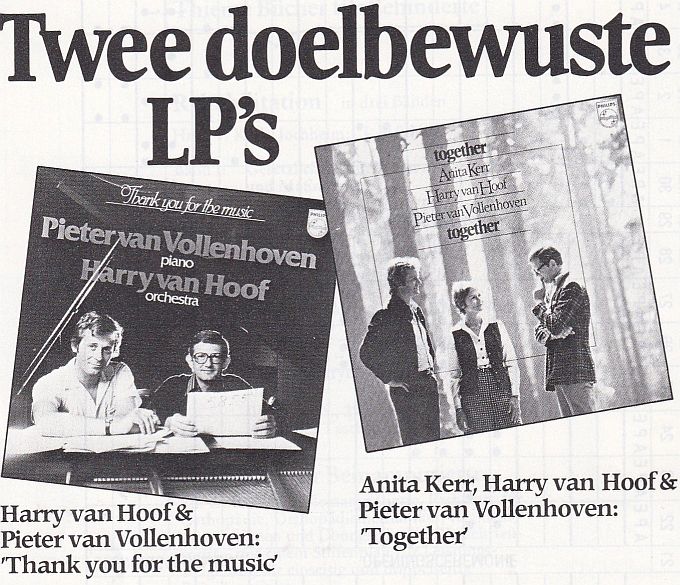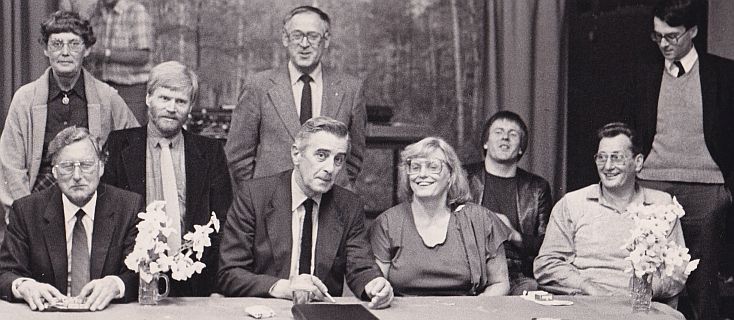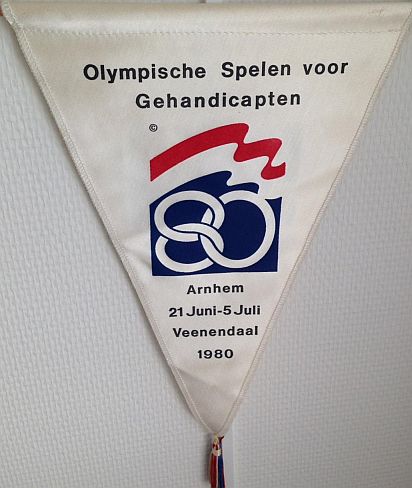the first conversation
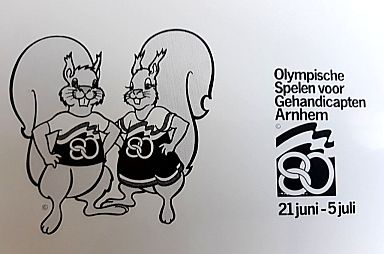
Olympics 80 Arnhem the why and how
The squirrels were chosen by the population of the Netherlands as they are frequently found in the forests of Papendal.
Image courtesy of Ian Brittain
Designed by Joop Smits of the PRAD advertising agency, the logo represents an unfurled Dutch flag with the number ‘80’ representing the year of the Games. The ‘80’ is made up of the three interlocking rings, which as previously, represent Friendship, Unity and Sportsmanship.
The previous Games
Dr Gutmann, president of ISMGF, thought it would be a good idea to host the World Games for the Disabled in the same country where the Olympic Games are held. A successful event since the first World Games in Rome in 1960. After administrative consultation with the IOC, the World Games can continue with the name Paralympics or Olympics for Disabled. Until now, competitions were only organized internationally for wheelchair-bound athletes.
In 1960 Rome (Ita) there were 400 athletes. Although Dr Gutmann also founded the ISOD (amputees) this year, of which he also became President, this group was not yet admitted to these Games. In 1964 in Tokyo, 370 wheelchair athletes from 23 countries took part. In 1968 Tel Aviv , for medical reasons, the Paralympics were not organized in Mexico (too high altitude) but in Tel Aviv (Israel) with 750 wheelchair athletes from 29 countries. In 1972 Heidelberg (Germany), 1000 wheelchair athletes from 44 countries took part in the Games. During the tournament, an athletics demonstration was given by amputee and blind athletes
In 1976 Toronto (Canada) 1560 athletes from 40 countries participated. For the first time, formal participation (460) of amputees and blind people in the program on a modest scale. Standing Volleyball is only a demonstration sport. Sitball was rejected by ISMGF because there was no classification system and different rules were used in the countries. In 1980 Arnhem (Netherlands), almost 2,500 athletes from 42 countries participated in 5 different diagnoses. The wheelchair athletes, the amputees, the elderly, the blind and the spastics. Where spastics and les autres were admitted to a limited extent (classes). Standing and Sitting Volleyball were formally included in the program.
In 1984. 2 Paralympics USA and England. This year it became once again clear how little unity the International Organizations were. The wheelchair group did not want to continue together with the others and organized the wheelchair Games in Champaign (USA). Ultimately, they were unable to complete the financial picture and returned the order to ISMGF, which then simply organized the Games in Stoke Mandeville. The other Organizations such as the ISOD, the Les Autres, the IBSA and the CP-ISRA were able to hold the Games in New York (USA)
1980 Olympic’s : " the allocation ".
At the 1976 Games it was known that the next Olympic Games would be held in Russia. Despite many attempts by the ISMGF to establish contacts, it was not possible to get a clear answer as to which city in Russia would host the Paralympics. Through many diplomatic contacts, the ISMGF received the message that Russia does not want to organize the Paralympics. The reason for this is that Russia has no disabled people and does not practice this sport. ISMGF wanted the Paralympics in 1980 anyway and invited Countries to register for these Games in 1977. The Board of the NIS (Netherlands) was prepared to register, but was very divided, with a Chairman who was clearly against. First, that “bump” had to be taken in the Netherlands itself. The Board nominated the Netherlands as a candidate, the Members' Meeting demanded a thorough feasibility study and the Chairman resigned his position. A broadly based Commission conducted an investigation and submitted a report to a special Members' meeting. The meeting agreed if the terms and conditions notified by the Commission are followed. The NIS was able to further complete and submit its “bid” to bring the Games to Arnhem
A separate Foundation will be established, which will be responsible for the Organization of the Games. Completely outside the administrative authority of the NIS. Persons with extensive experience in major events are appointed to the board of the Foundation. The financing of the Games must also come from outside the NIS.
A delegation from the NIS traveled with the team to Stoke Mandeville to explain the NIS "Bid book". In addition to the Netherlands, Denmark and South Africa have also submitted a request. After a brief study of the documents, Mr Westerneng and Bolk from the NIS were invited to Dr Guttmann to hear from him that the Netherlands could organize the 1980 Games.
The South Africa issue
There is now strong international political pressure in the sports world to ban South Africa from international tournaments in connection with the Apartheid regime. This pressure is also increasing on the Dutch Associations and the Valid Associations such as NBB and NeVoBo and other Associations declare their solidarity. It means that the NBB does not cooperate in the sending of the wheelchair basketball team to the annual Stoke Mandeville in 1979. So the basketball players do not go. This decision caused Dr Guttmann to explode in anger and threatened to expel the Dutch wheelchair basketball players and deprive the Netherlands of organizing the 1980 Games. The meeting with the countries present in Stoke was grim and did not accept Dr Guttmann's views. He still managed to declare during the meeting that he had decided to also admit the Spastic athletes to the Games in Arnhem. Moreover, he announced that he had adjusted the classification of “les Autres”. This new "disabled" group was not further described and was not given its own classification system. She had to fall within the "amputee classification". This addition in particular cost many players from the Dutch Sitting Volleyball team a place in the Arnhem Games
Ultimately, the Dutch Parliament made the final decision that South Africa was not welcome in the Netherlands. As a result, ISMGF was unable to take any further sanctions against the Dutch Sports Association.
The organisation
The announcement in 1979 by Dr Guttmann that the CP-ISRA can still participate in Arnhem with a number of athletes and that the “Les Autres” can participate to a limited extent came as a bombshell for the Organization in the Netherlands. Nearly 3,000 medals in 697 disciplines with 2,500 athletes have now been recalculated. A gigantic job to classify all those athletes according to the latest changes. In addition, to get the competition programs for the individual diagnosis groups and disciplines into timetables and accommodations. Then place the athlete in the correct program based on his classification or remove him because he has been disqualified.
The medical classifications
There are now 8 classes for Wheelchair users, 9 classes for amputees/Les autres, 2 classes for the Blind, 4 classes for Spastics. 4 Dutch doctors have been invited for the classifications : Marion van Eijsden, Nel Versteeg, Harm Wiegman and Watze Sijtsema, in addition to the many other international classifiers. Ultimately, the sitting volleyball players were all assessed and registered with an "amputee" classification. Unfortunately, several players were disqualified again.
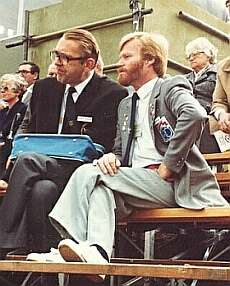 Pieter Joon and ISOD classifier dr Harald Natvig had many meetings to explain his views on sports and medical classifications
Pieter Joon and ISOD classifier dr Harald Natvig had many meetings to explain his views on sports and medical classifications
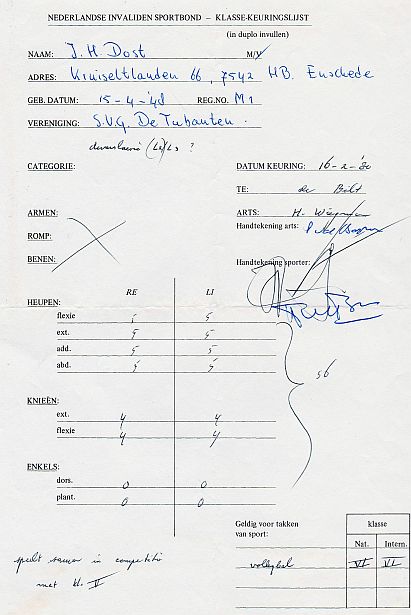 classification form 1980
classification form 1980
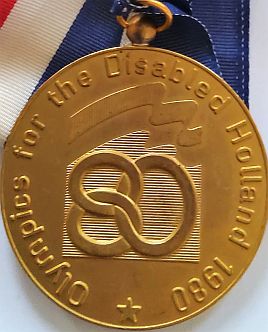
Of the 42 participating countries, only 2 countries remained without the honorary metal, although 3000 medals were available. The distribution of the medals for the top 6 Nations:
-
USA 76
-
POL 76
-
GER 68
-
CAN 63
-
GBR 45
-
NED 33
The e accommodations
De Rijnhal in Arnhem
Swimming pool in Veenendaal
Sportcentrum Papendal
Oranje kazerne Schaarsbergen
Restaurant
Every athlete and official was in possession of food vouchers. This made it possible to obtain meals and drinks in the Village. An excellent arrangement
Transport
transport from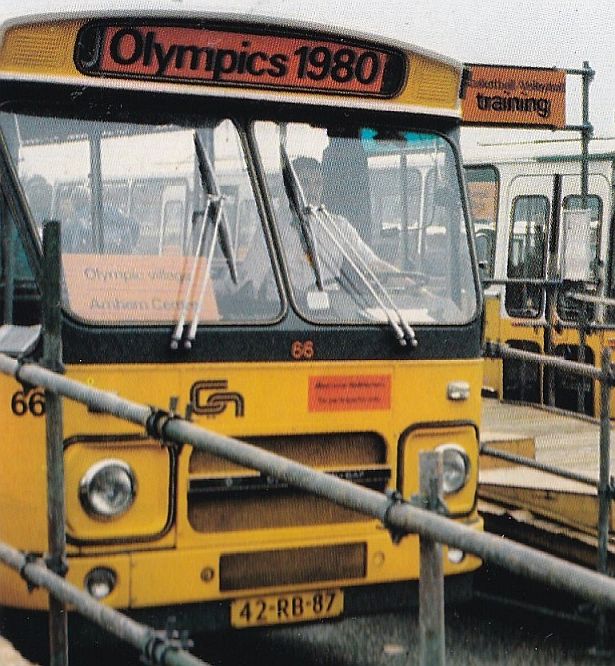
the village to the sports locations, as well as to the center of Arnhem, was excellently arranged. Only at the Papendal sports center itself no transport was provided between the different sports locations. This often caused problems and delays in the matches.
The employees and volunteers.
About 1,600 volunteers within the Organization had a task to make the Games a success.
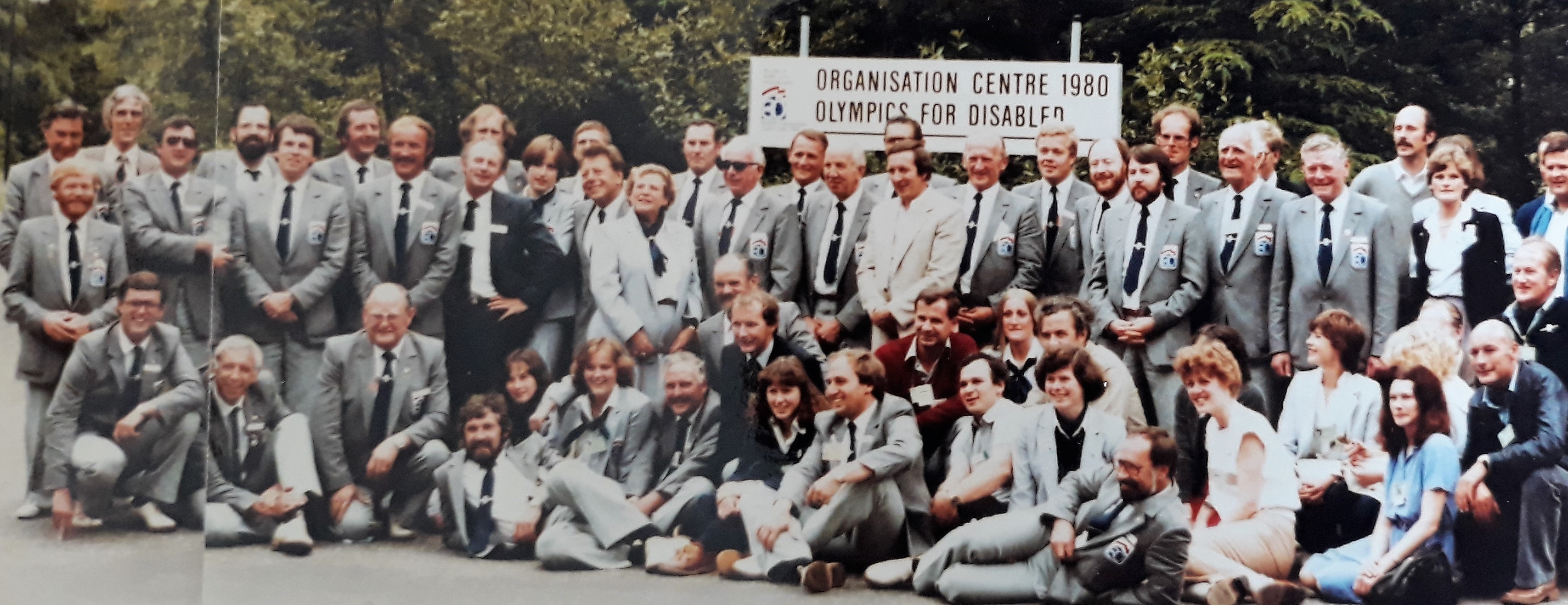
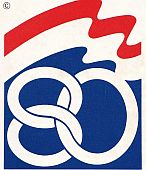

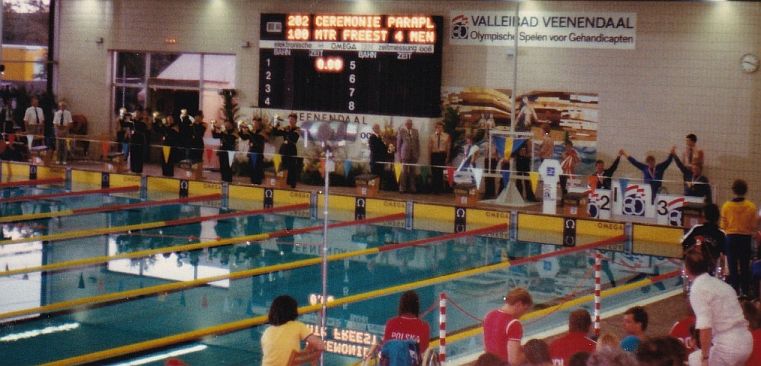
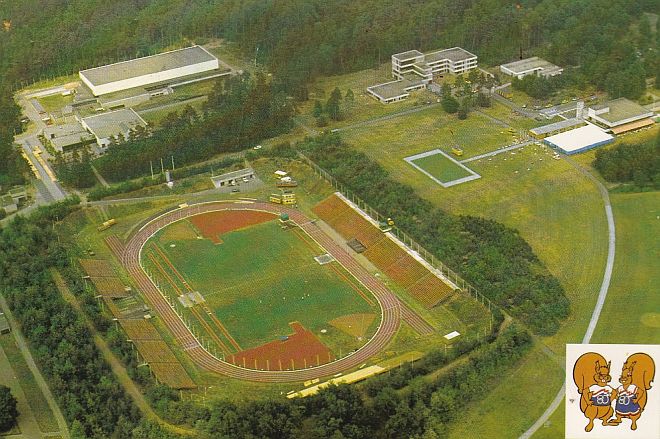
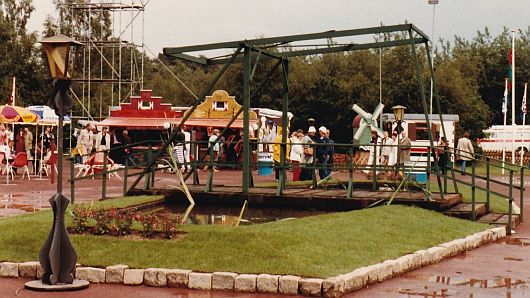
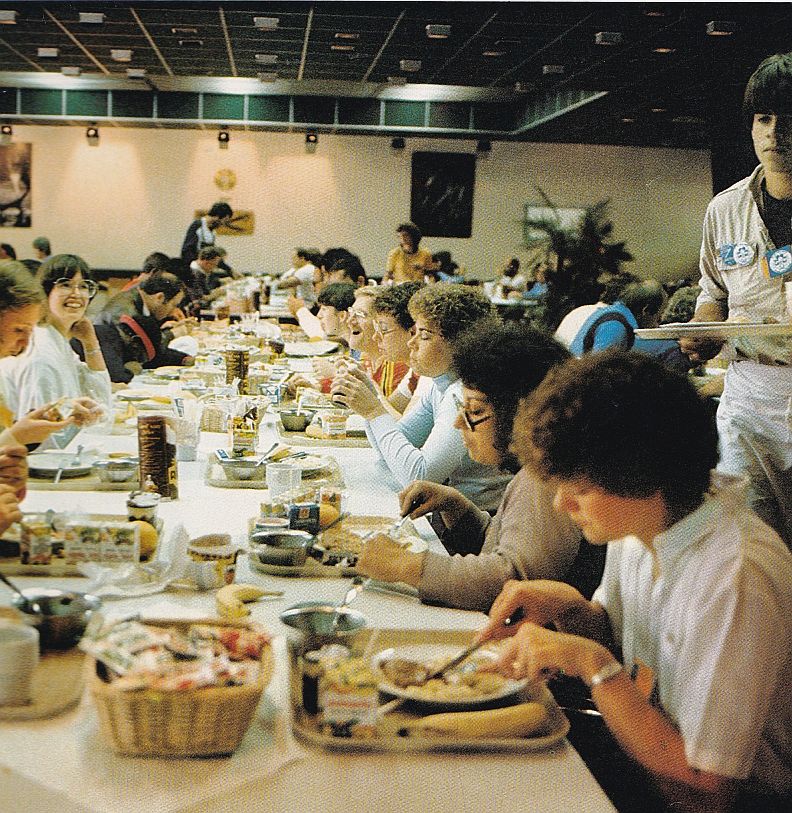
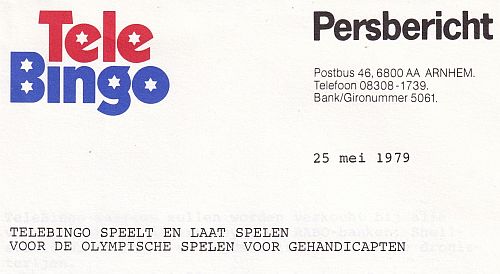 The TV broadcasts ran from November 19, '79 to February 11, '80 and each time from a different province.
The TV broadcasts ran from November 19, '79 to February 11, '80 and each time from a different province.